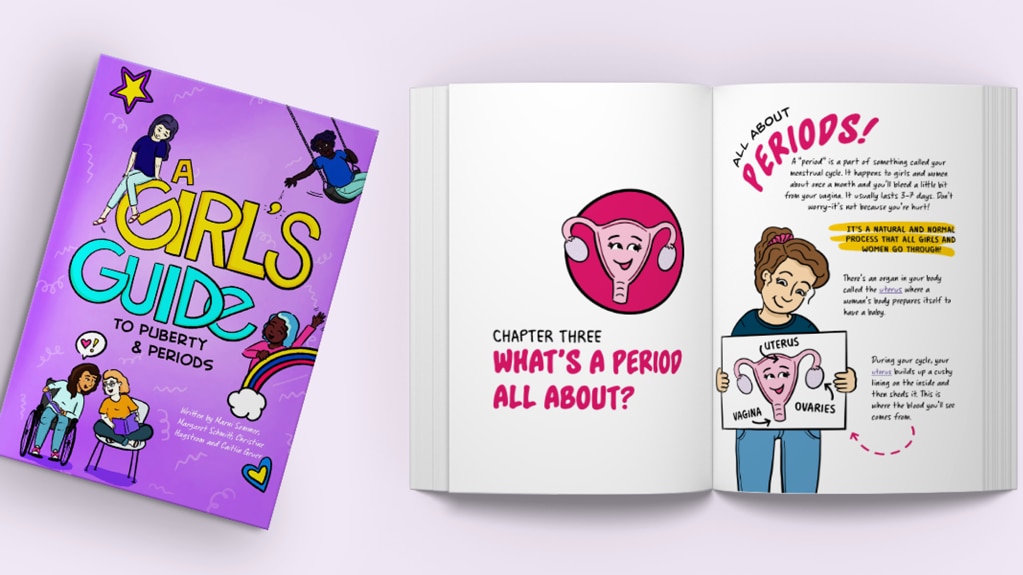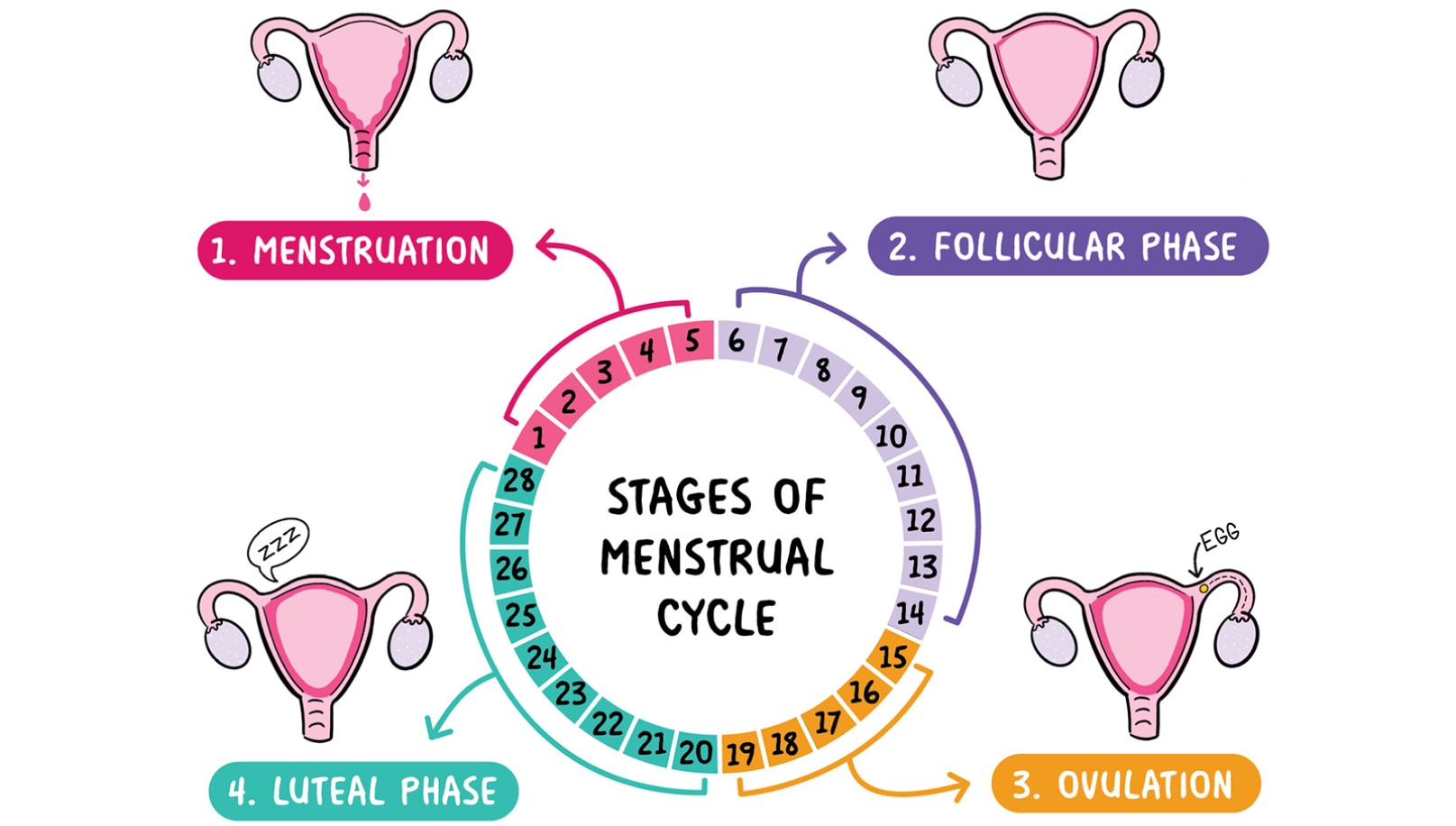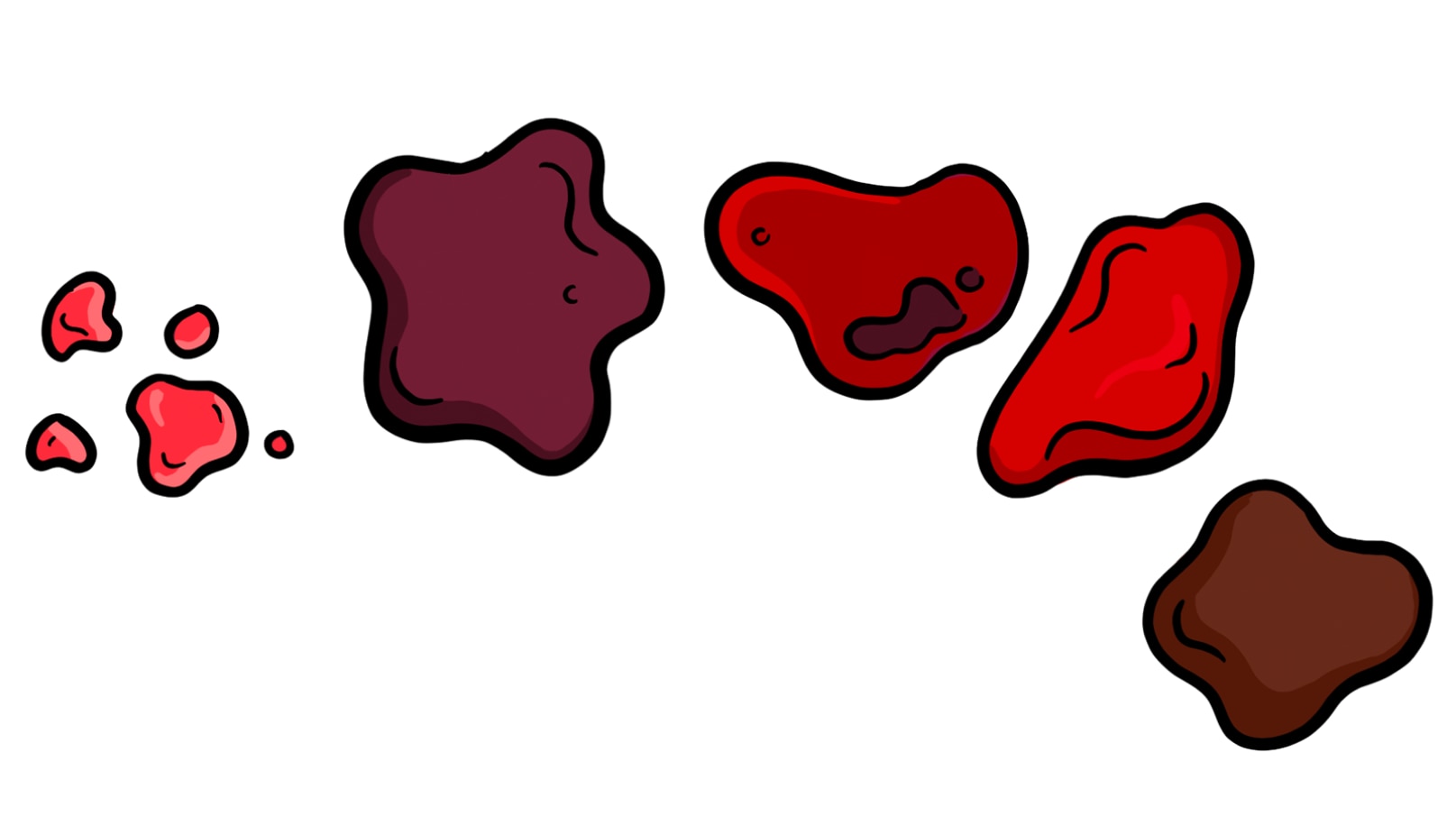What's a period all about?

Featured content from A Girl's Guide to Puberty and Periods: What's a period all about? (Chapter 3).
Keep reading for highlights or download the whole chapter! Check out the full version* with even more information, illustrations and tips you can revisit again and again.
In this excerpt from A Girl’s Guide to Puberty and Periods, you’ll learn what a period is and how it affects you and your body.
In this article:
All about periods!
A period is a part of something called your menstrual cycle. It happens to girls and women about once a month and you’ll bleed a little bit from your vagina. It usually lasts three to seven days. Don’t worry — it’s not because you’re hurt!
It’s a natural and normal process that all girls and women go through!
There’s an organ in your body called the uterus where a woman’s body prepares itself to have a baby.
During your cycle, your uterus builds up a cushy lining on the inside and then sheds it. This is where the blood you’ll see comes from.

The ovaries connect to the uterus, and the uterus connects to the vagina.
Why is it called a cycle?
Your menstrual cycle has four main stages that repeat over and over — just like a circle. A regular cycle happens on average every 21 to 35 days, but some girls have shorter cycles and some girls have longer ones! A cycle can also vary. So, don’t worry if your period comes after 29 days one month, and after 33 days the next month.
- Menstruation: days 1 through 5
This is the part of your cycle where your uterus sheds its lining — also called your period! - Follicular phase: days 6 through 14
Your uterine lining begins to build back up and your ovaries get ready for something called “ovulation.” - Ovulation: days 15 through 19
Your ovaries release an egg! - Luteal phase: days 20 through 28
The time between ovulation and the first day of your period. It’s sort of like your uterus’s rest period.

What a 28 day cycle may look like.
So ... how much blood will there be?
There is no right “amount.” On the first day or two, it is usually a heavier blood flow. And then it slows. Usually, it’s about the amount of two to three tablespoons in total for your whole period. If you think you are bleeding more than this, talk to a parent or caregiver for advice.
What does period blood look like?
Menstrual blood comes in all different colors. When you think “blood,” you think bright red! But menstrual blood will often look to be different colors of brown on your underwear. And it can be very light, just small stains. Or you can see a “clot” or a “clump” sometimes.
This is all normal!

How do I keep clean during my period?
Taking a shower or bath once or twice a day can help you to feel clean.

It happens to everyone! If you have a leak, tie a shirt around your waist to cover the stain. Later, wash your pants and underwear with soap and water to help get the stains out.
What about leaks?
It’s good to change your product every few hours. For lighter blood flow, you can change less often. If a leak stains your clothing, don’t worry, it happens to everyone! Tie a shirt around your waist to cover the stain until you can change. And if you get your period and don’t have a pad or tampon on hand, just roll up some toilet paper and put it in your underwear until you can find one!
How to clean stains
If you get blood on your underwear or clothes, don’t worry! Washing them with some soap and cold water will help get the stains out.

You can talk to an adult about PMS. All girls and women experience it and can support each other.
PMS (stands for premenstrual syndrome)
It’s not a disease or anything bad. It is just a natural result of your body’s hormones!
PMS refers to all the different things that you can feel before you get your period.
Some girls feel like their breasts are swollen or sore for a few days.
Other girls will feel like their stomach is full or bloated.
Some will also feel pain in their lower back.
PMS can also make you feel emotional.
All these things are normal!
These symptoms will go away soon after your period arrives. If you are worried about PMS, talk to an adult about it.

How do you manage cramps?
It’s always good to ask someone you trust for advice on cramps. Some people like to take pain medicine like ibuprofen (but make sure to get this from an adult!).
Putting a heating pad or warm washcloth on your stomach or lower back can help with the pain.
Some girls also find that exercise can reduce the pain too!

Ask an adult for ibuprofen to help with pain from cramps. You can also put a heating pad on the area that hurts.
But wait, there's more!
Check out the full version of this chapter with even more info and illustrations when you download it.

This content is for informational purposes only and is not medical advice. Consult your health care provider before taking any vitamins or supplements and prior to beginning or changing any health care practices.
-
Marni Sommer, DrPH, MSN, RN, Professor at the Mailman School of Public Health, Columbia University and co-authors. A Girl’s Guide to Puberty and Periods. Grow and Know, 2021.
-
To learn more about the book and Grow & Know’s mission and to access videos, visit their website
-
*FOR CHECK OUT THE FULL VERSION: CVS® exercises no control over the linked content, nor does it vouch for the accuracy or accessibility of the information contained on the destination server.